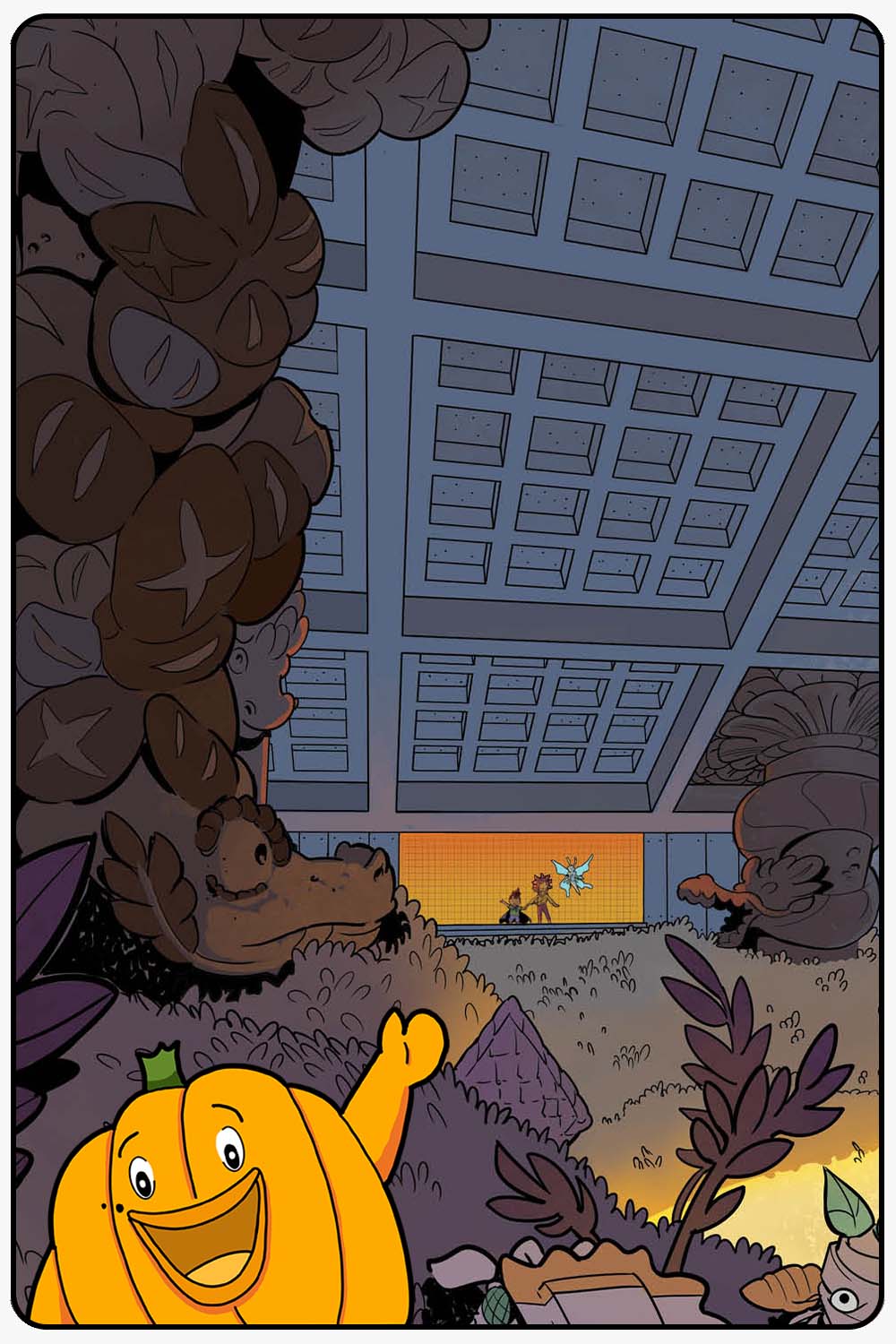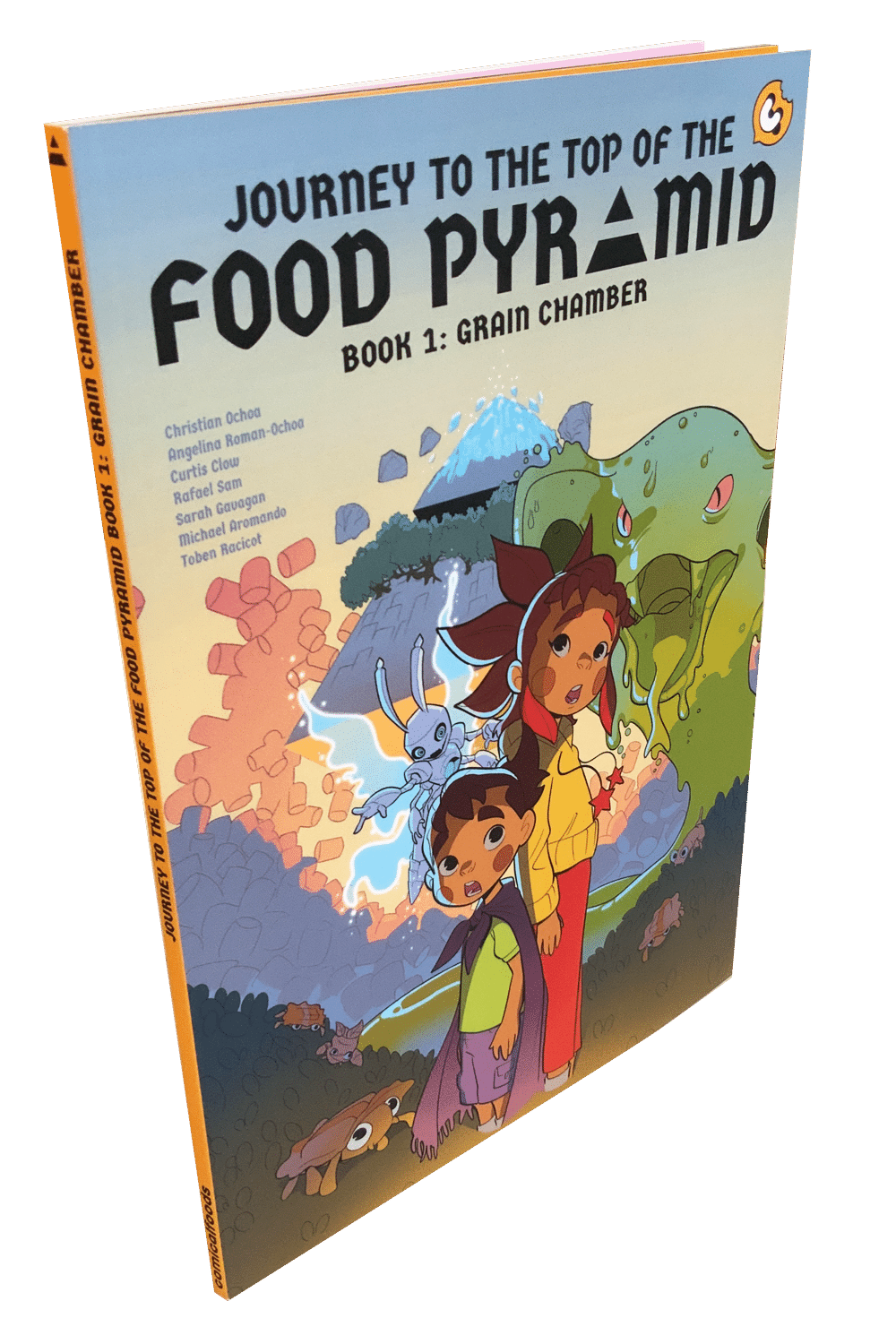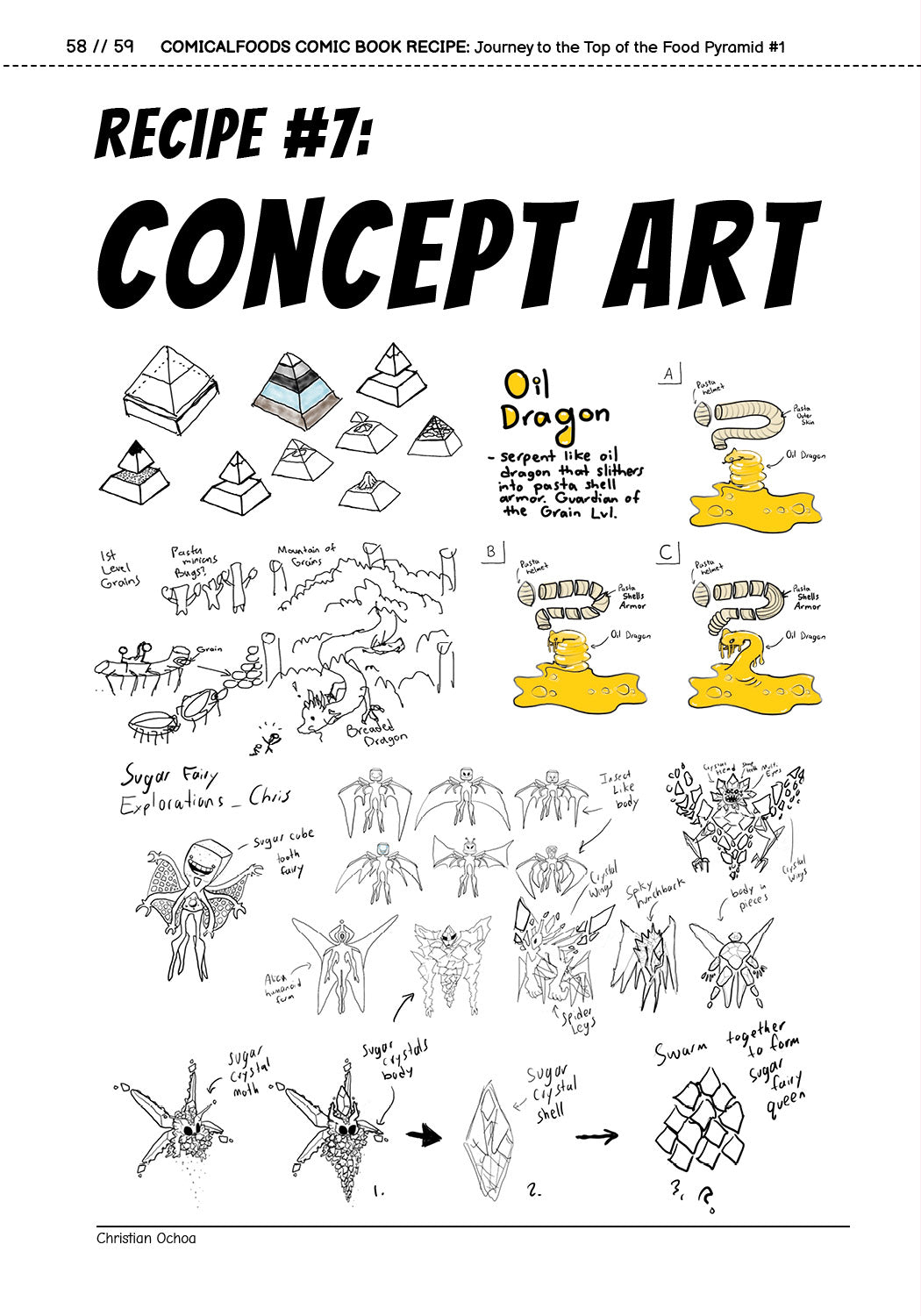Comicalfoods Recipe for how to come up with comic book ideas.
1. Create a unique story world.
A story world is a setting that has independent interest from any character or story plot. A setting is a plain old muffin. A story world is the birthday cake everyone wants to eat. It's in your benefit to cook up the most amazing story world that readers will want to explore.
This is what we did with our story Journey to the top of the Food Pyramid Book 1: Grain Chamber. Our story world was a magical food pyramid containing interior levels full of food creatures and landscapes. Since comic books are a visual medium it helps to create an amazing story world and then show it off on the front cover and interior pages.

2. Reference other stories for inspiration.
Stuck on a blank page? Write a list of other stories and why you like them. For my own list I wrote down:
Cloudy with a chance of meatballs 2. I love the creature designs.
Spirited away. I love the symbolism of the bath house setting.
One Piece. I love the idea of a special fruit granting awesome powers.
This list inspired me to come up with my own ideas for creature designs, symbolic settings, and magic powers.

3. Start with an interesting title.
Coming up with a title that makes readers want to keep reading is a great way to start. When it comes to tasting titles start with juicy words. You may want your readers to feel some kind of strong emotion. You may want to inject a strong visual into their minds. You may want to leave them with questions and hungry for answers. Some of my favorite story titles are:
Cloudy with a chance of meatballs
Something is killing the children
Journey to the center of the Earth
Alien Vs Predator
Jurassic Park
Finger Guns
4. Give your character a want and a problem.
Whose lives are we watching? Think about different character details, from their physical traits to their strongest desires. From there, you can brainstorm some obstacles that are in the way of this character’s success, and craft the plot and world around them.
5. Start with a style.
Start with a writing style, art style, working style or all three! For example the creators of the comic book Blue in Green created a jazz story where the lettering, art, and dialogue rises and falls in energy and emotion, much like an improvised piece of jazz music. The creators also used improvisational storytelling. Instead of outlining the 152 page comic book they worked on their daily virtual "jam sessions" to decide where the story should go next. Every ensuing page was in reaction to whatever what drawn on the previous page.
6. Start with a theme.
Comics can be expensive and can take a long time. It's important to remember that you are spending that money / time to give yourself an opportunity to say something. This is your chance to say what's really important to you. You can start with a theme, the "deeper meaning" of the story, what the story represents, or the message you want to convey. For example Brian K. Vaughan used the concept of parenthood as the inspiration for Saga. He stated: "...I guess I've been thinking about what it means to bring children into the world during a time of multiple ongoing wars, and noticing how a lot of our childhood entertainment maybe helps prepare us for a state of perpetual conflict, for good or bad."
7. Write in your favorite genre.
Pick your favorite genre and start adding elements you wish your genre featured more. You could think of common tropes or ideas in your genre that irritate you and create an idea from that. For example writer of Coda, Simon Spurrier stated that he always intended to do a Swords ‘n Sorcery epic at some point. But he felt like he couldn’t start writing without identifying everything about high fantasy that annoyed him and then murdering it. He said "Things on the list ranged from ridiculous names, the casual racism, the ham fisted metaphors, and up to the single greatest genre element in there: Magic. In too many fantasy stories magic is this Deus Ex Machina force which triggers plot elements without cost or repercussion. So I got rid of all the magic. Well, mostly. The better analogy would be that magic is to Coda as gasoline is to Mad Max. You can’t rely on it."
8. Start from real life.
Start from real life by looking back at any memorable personal experiences and drawing from them to write a story. For example Curtis Clow, writer of Beastlands, was inspired by his dog Ellie who survived a car accident. He wrote a story about appreciating what you have, before it's too late. He wrote a story for Ellie. A story set in a medieval fantasy world filled with powerful companion creatures known as “keepers,” where a group of friends are on a quest to find a father, save each other, and as many keepers as they can.























